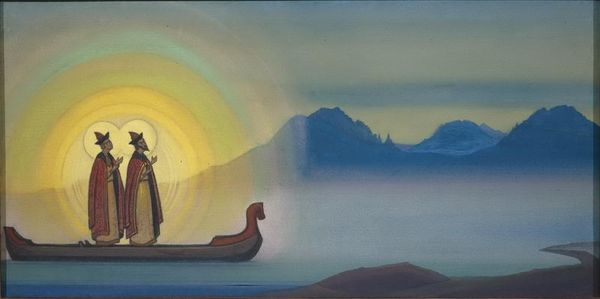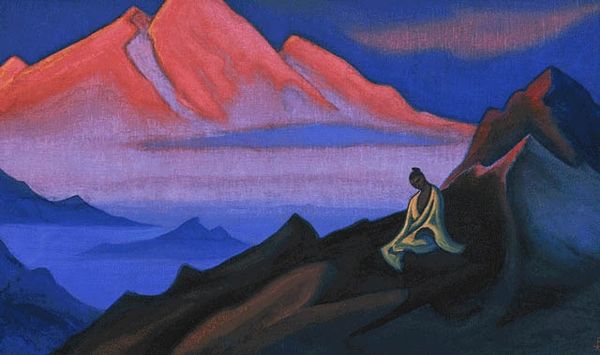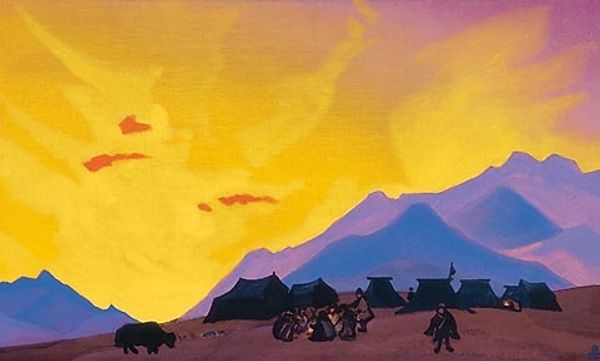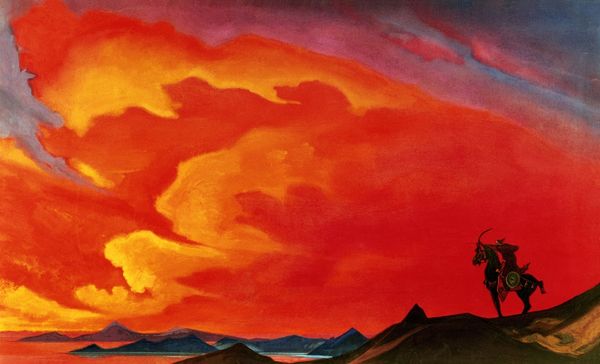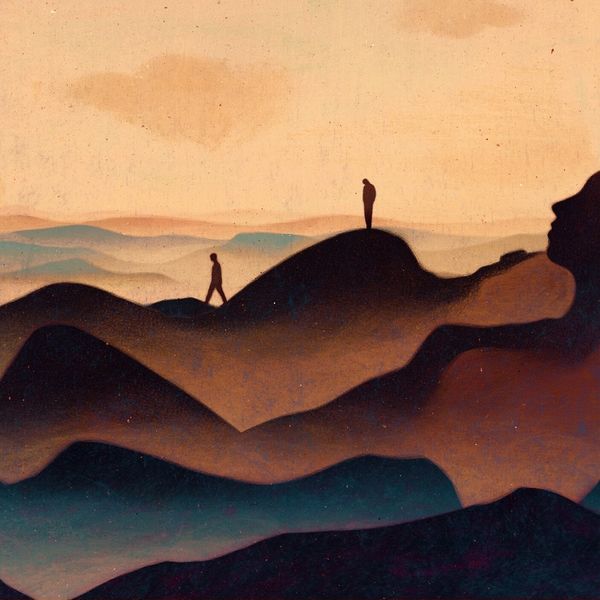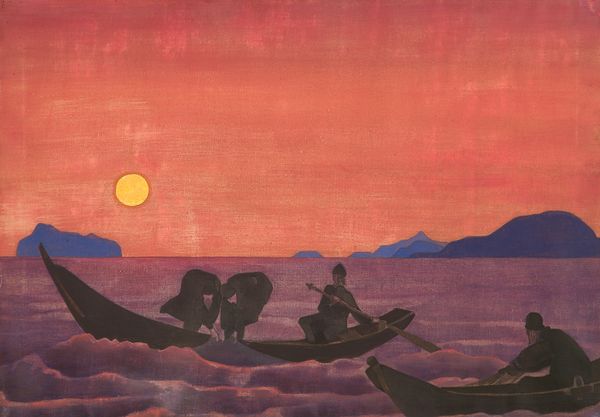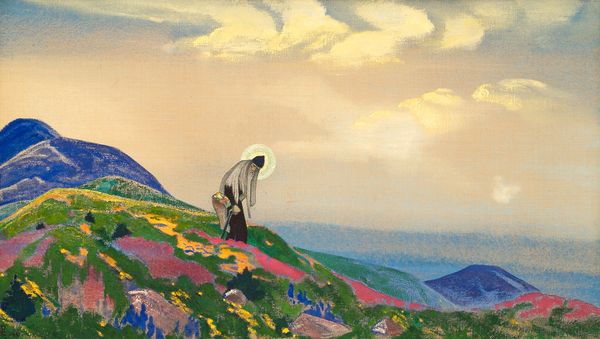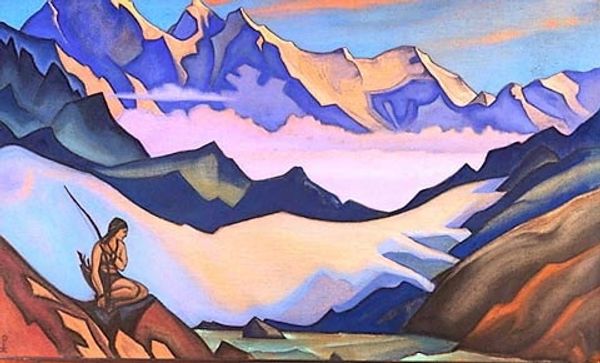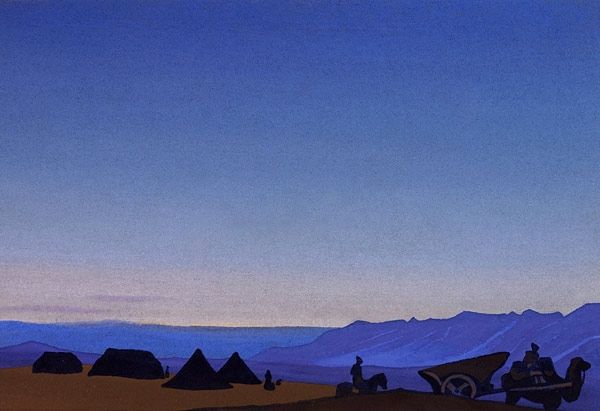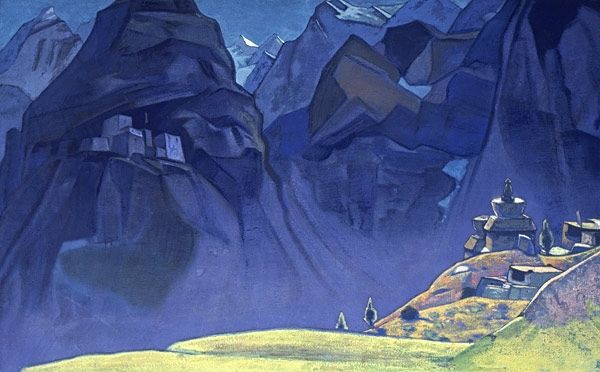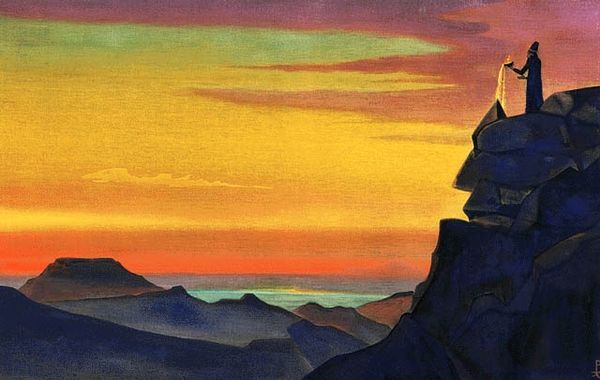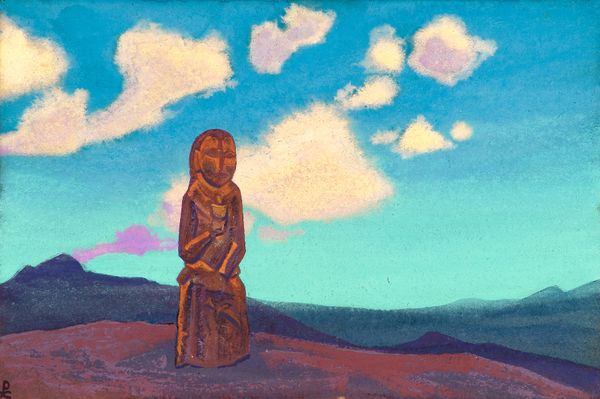
Copyright: Public domain
Curator: Nicholas Roerich’s "Voice of Mongolia," painted in 1937, offers a compelling symbolic landscape. Editor: It's ethereal. Those horizontal cloud formations give me a sense of wide-open space and also this sort of weighty calmness pressing down from above. Is it oil? You can almost feel the canvas texture. Curator: It is believed to be an oil on canvas. The composition directs us to consider symbolic readings of the horse and riders silhouetted against the radiant sky. Roerich was deeply influenced by Theosophy, which greatly impacted his symbols and allegories of spiritual ascension. Editor: I'm curious about the pigments themselves, though. Was Roerich using locally sourced materials, grinding his own pigments perhaps, or was he working with industrially produced paints? This really changes how we understand the visual vocabulary on view. Were these colours easily attainable for someone else trying to do this style, or was it his proprietary artistic gesture? Curator: That's a great question, about which there isn't a definitive resource that I am aware of. Either case seems fitting to Roerich. The figures on horseback, of course, speak to a nomadic past and present, but there is something about how their positioning beneath the vibrant sky suggests not just physical travel, but also a spiritual journey and search for higher meaning. Notice the colours too - orange is about enthusiasm, happiness, and creativity while purple symbolises wisdom and spirituality. Editor: You can definitely tell Roerich's interest was more on representing a particular inner quality over realism. Did that impact what types of supports or production methods he used, as in was he focused on speed to capture feeling more easily rather than more refined details? This has implications about who the work would have been created for and shown to. Curator: Given his philosophical approach and fascination with archetypes and mystical quests, Roerich may not have given much importance to materialistic support; his symbolic lexicon appears intended to evoke universal spiritual values transcending the tangible world. Editor: Right, Roerich seems very much on the iconographic side in conveying spiritual insight that material production is clearly a conduit to accessing. It does invite speculation to what extent his materials are symbolic of that intention and larger process. Curator: Ultimately, "Voice of Mongolia" encourages us to contemplate the spiritual and symbolic weight carried by both landscape and those traversing it, regardless of the how its elements were attained. Editor: For me, looking at the materials this way definitely provides another way of contextualising Roerich's symbolic universe.
Comments
No comments
Be the first to comment and join the conversation on the ultimate creative platform.
